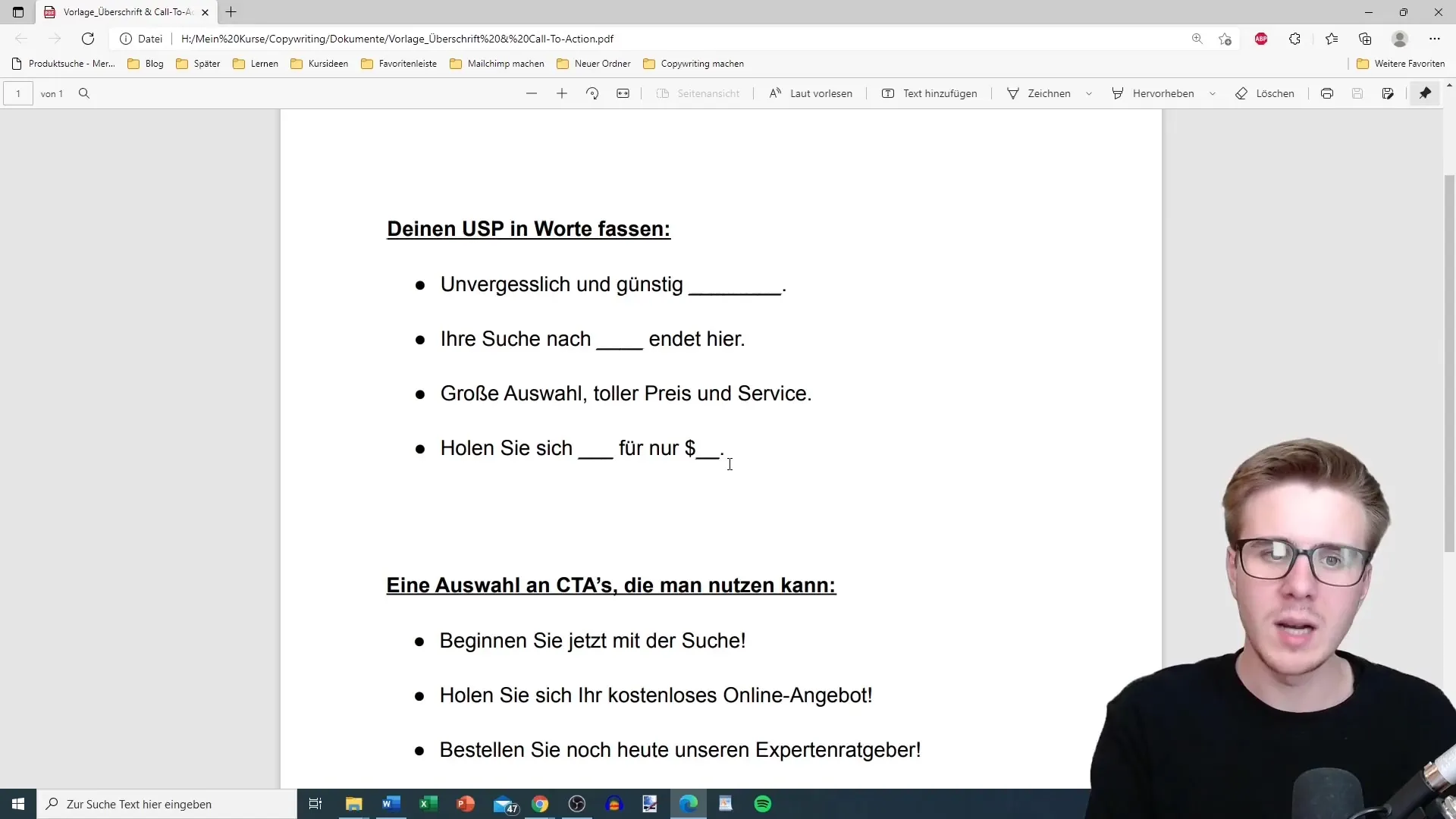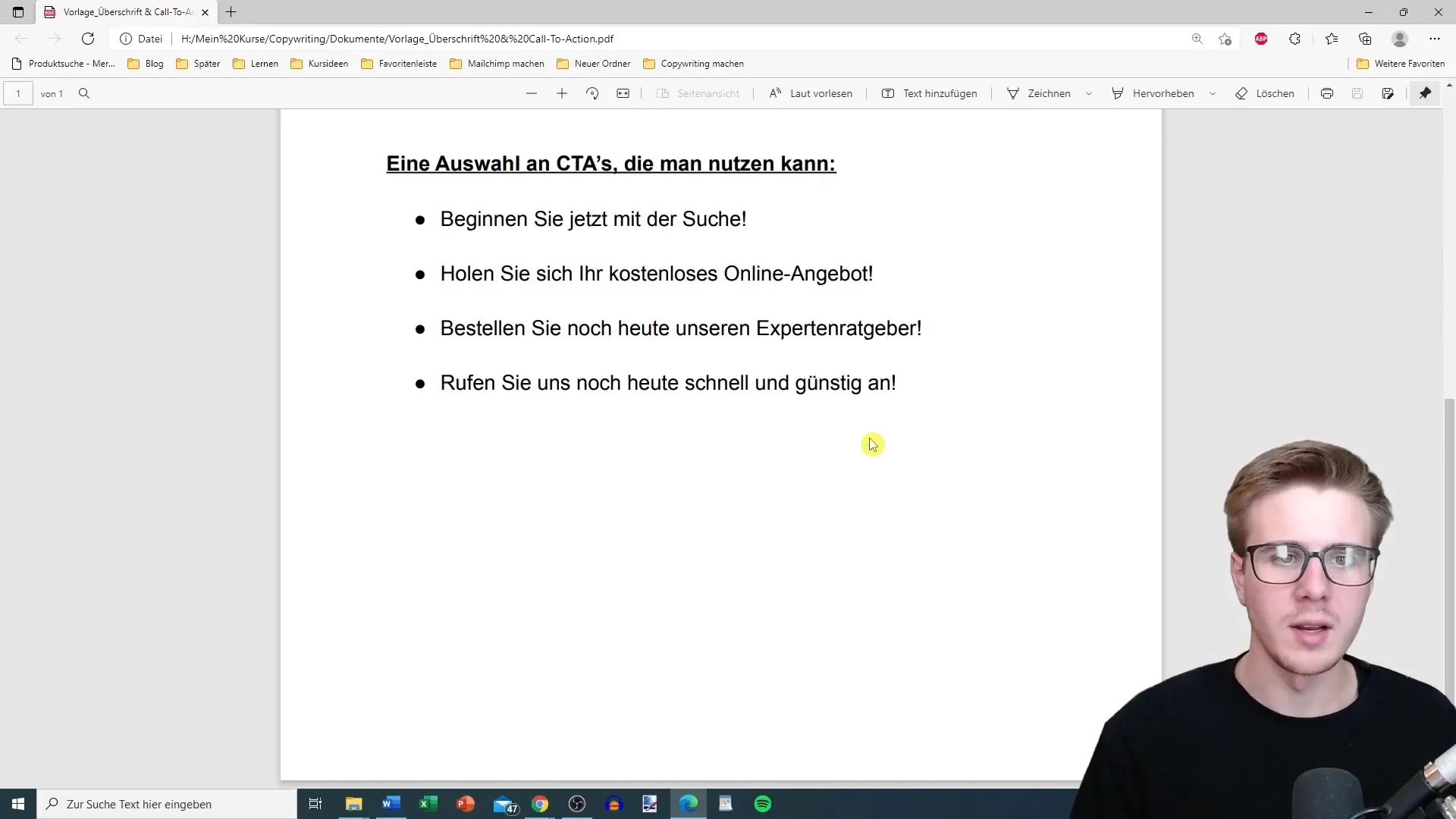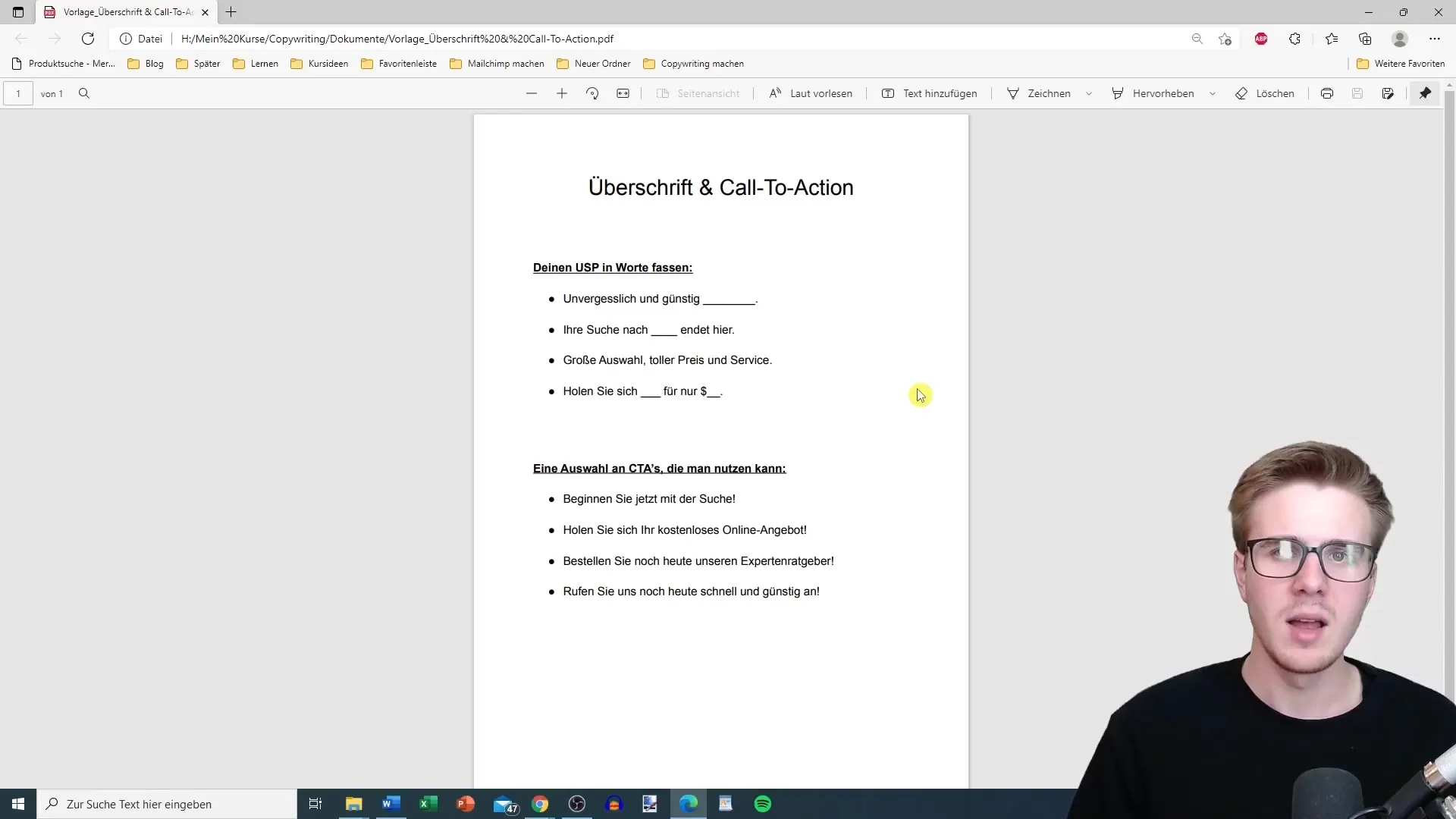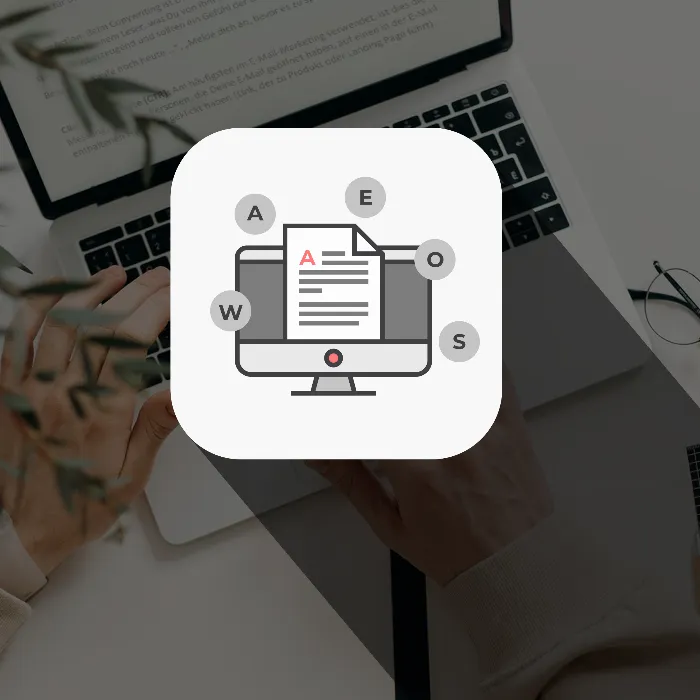Writing appealing headlines and effective Call-to-Actions is an art that is crucial for the success of your advertising. Often, you lack the necessary inspiration or the right words. Here you will learn how to use simple but impactful templates to capture the attention of your target audience and inspire them to take action. Let's delve into the actionable approaches that will help you navigate the jungle of the advertising world successfully.
Key Takeaways
- Headlines are crucial to pique the curiosity of readers.
- Call-to-Actions should be clearly formulated and instructive.
- Your unique selling proposition should be visible in both elements to ensure differentiation.
Step-by-Step Guide
1. Crafting the Right Headline
The headline is the first thing your potential customers will see. It should be concise and memorable. Ideally, highlight your Unique Selling Point (USP). The choice of words is crucial. For example, you could say: "Fresh and Natural – Aloe Vera by bgitarhero.com." Here, you focus on clear, strong terms that immediately leave a positive impression.
Another approach is to address the benefit for the customer. Formulations like "Your search for the perfect music school ends here" are effective because they speak directly and convey a sense of solution.
2. Tailoring the Description
Although you must be individual in the description line 1, there are proven approaches you can use. For example, when promoting a product, you could combine the price and a compelling benefit, such as: "Get the new Guitar XYZ for only €20!" However, if your customer has never been in contact with you before, it is advisable to initially leave out the price and instead focus on selling the click.

3. Developing the Call-to-Action
The Call-to-Action (CTA) is the moment of decision for the reader. You want them to click on your ad, and that should be clearly and simply formulated. Examples like "Start your search now" are direct and motivating, encouraging action. If you offer a comparison site, a CTA could be: "Start your free comparison now."

However, avoid suggesting an immediate purchase in the first contact. The focus should always be on encouraging the reader to want to learn more about your offer.
4. Retargeting and Target Audience Approach
If you have run a campaign with a specific product and know the target audience, you can be more direct in the next phase. If customers know who you are, offering more specific information makes sense. You could say, "Call us today and get expert advice."
Here, it is important to be flexible with your CTAs. You can also emphasize that it is not just about selling a product – you could also refer to a phone call or other interactions.
5. Creativity and Variation
Although templates are helpful, you should not use them verbatim. They should serve as inspiration to develop your own creative ideas. Try out different formulations. The language should be fresh and everyday, like "Watch the video now" or "Find more information through the link."

Use these structures to create new headlines and Call-to-Actions that help you stand out from the crowd.
Summary
By applying the techniques presented for creating headlines and Call-to-Actions and remaining flexible, you can create effective advertising that resonates with your target audience. Get inspired and dare to be creative – this will help you achieve the best results from your campaigns.
Frequently Asked Questions
How do I create an effective headline?Make sure to clearly highlight your Unique Selling Point and use powerful, concise words.
What should I consider in the Call-to-Action?Keep it clear and instructive, avoid suggesting an immediate purchase.
How important are templates for me?Templates are useful for inspiration, but you should develop your own ideas to appear authentic.
What role does retargeting play?Retargeting allows you to communicate more directly with customers who are already interested in your brand since they already know you.
When should I mention the price?Ideally, only after the first contact – initially, it may be useful to emphasize only the benefits.


